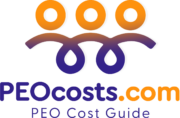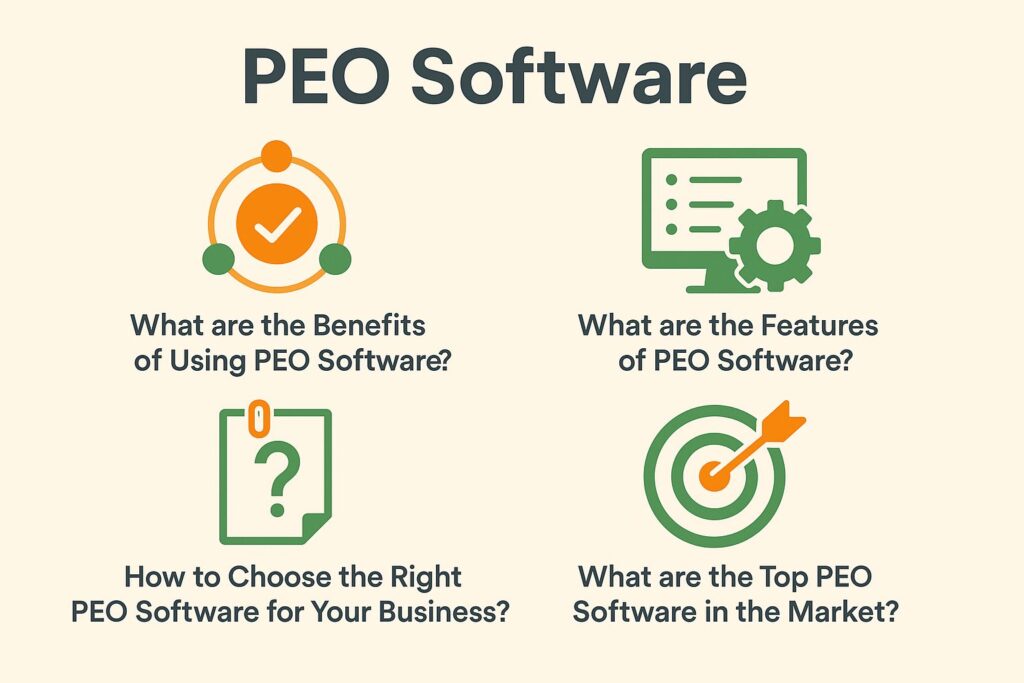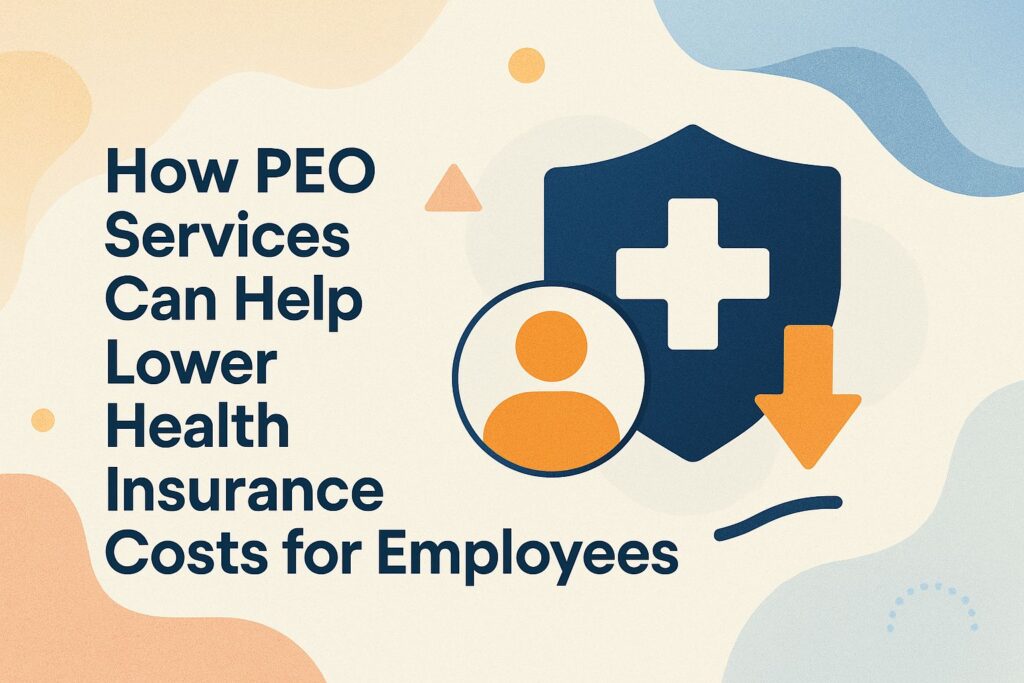
How PEO Services Can Help Lower Health Insurance Costs for Employees
Having trouble with rapidly increasing health insurance expenses? You’re not alone. Affordable health coverage is essential for keeping employees happy, involved, and staying with the company, but many businesses find it challenging. PEO services can make a big difference, offering you access to improved plans, health insurance choices, and reduced premiums with cost savings. Learn how these services function, the advantages they bring to companies, and methods that can help your business save money while maintaining your team’s health. Find out how to change your method of providing health benefits to employees and improve their productivity!
Definition of PEO Services and Outsourcing Strategies
A PEO offers a wide range of HR services, like handling payroll, managing benefits, employee benefits, and dealing with risk management including labor costs. It acts as a co-employer, sharing responsibilities.
By working with a PEO, companies can simplify HR tasks, benefit administration, and concentrate on their main activities. For instance, a small business can use the PEO’s payroll system to minimize mistakes and save time.
This service typically includes access to professional software like Gusto or ADP, ensuring compliance with tax benefits and government regulations. A PEO can offer scalable health benefits, allowing businesses to provide competitive packages with flexible benefits without the administrative burden.
A PEO improves efficiency and helps businesses handle complicated regulations easily.
Importance of Health Insurance in Employee Benefits and Employee Welfare
Health insurance is a critical component of employee benefits, influencing recruitment, retention, and overall employee satisfaction, especially in competitive job markets.
Providing good health insurance is important for businesses to hire and keep the best employees, ensuring a recruitment advantage. Professional Employer Organizations (PEOs) can greatly improve these services by combining resources from different companies to get better rates and coverage options.
For instance, a small business partnered with a PEO may gain access to premium plans typically reserved for larger organizations, reducing costs by up to 30% through risk pooling and insurance negotiations. PEOs provide administrative support, ensuring compliance with regulations and freeing up internal resources to focus on core business activities.
Breaking Down Health Insurance Expenses and Expense Review
Knowing how health insurance costs work is important for businesses to manage expenses while providing essential benefits to employees, improving their financial well-being. Partnering with a Professional Employer Organization (PEO) can also assist businesses in managing these costs effectively. As mentioned in our overview of why talent acquisition is easier with a PEO, these organizations streamline HR functions, which can be a valuable strategy.
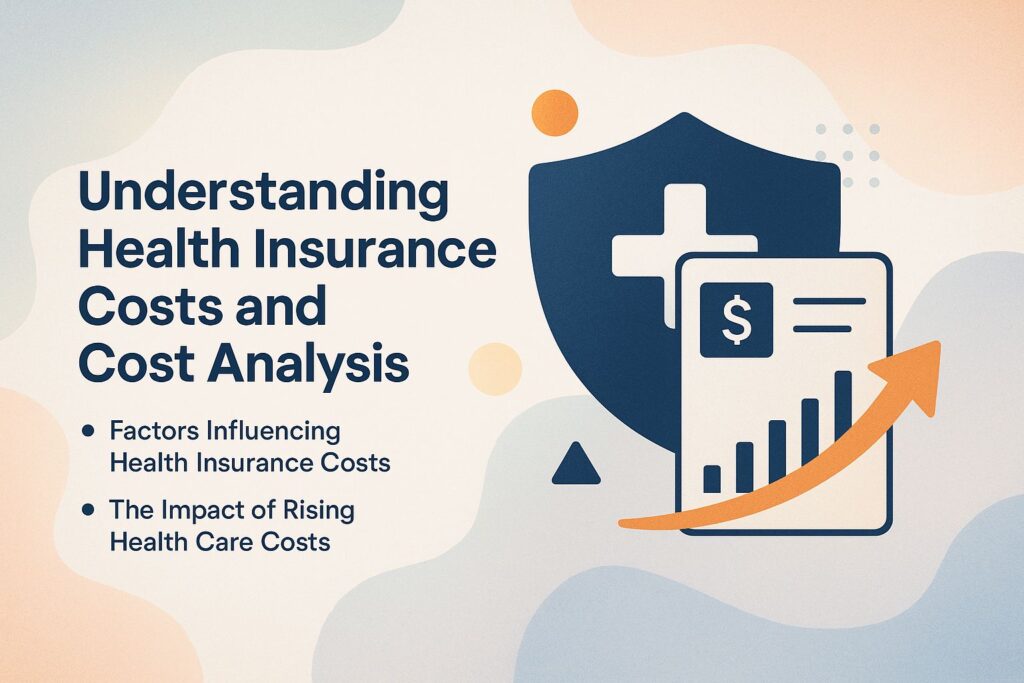
Factors Influencing Health Insurance Costs
Key factors such as employee demographics, geographic location, and plan design significantly impact health insurance costs for businesses and influence strategic planning.
To manage these costs effectively, businesses should analyze their workforce demographics by gathering data on age, health histories, and family sizes for better claims management. Tools like Gusto and Zenefits can help assess these metrics and aid in strategic partnerships.
Geographic location also plays a role; companies in urban areas may face higher premiums due to market rates. Consider customizing the plan design-offering different tiers of coverage can cater to varying employee needs while controlling costs through cost containment.
Regularly reviewing these factors allows businesses to make informed adjustments to their health insurance strategies.
The Impact of Rising Health Care Costs
Rising health care costs have become a pressing issue, leading to increased premiums and influencing employee satisfaction and retention rates.
In fact, a recent study by the Kaiser Family Foundation revealed that employer-sponsored health insurance premiums have risen by 55% since 2010, affecting financial stability and putting a significant financial strain on businesses.
When expenses rise, employees might feel unappreciated, particularly if they do more work without receiving better benefits, leading to lower employee morale.This dissatisfaction often translates to higher turnover; companies could lose up to 30% of their workforce annually due to unresolved health care concerns.
In response, businesses are increasingly exploring transparent benefits packages and wellness programs to improve morale and retain talent.
How PEO Services Function and Improve Workforce Management
Knowing how PEO services work shows their ability to change HR management by distributing tasks and improving service options. One of our most insightful case studies demonstrates this principle with real-world results.
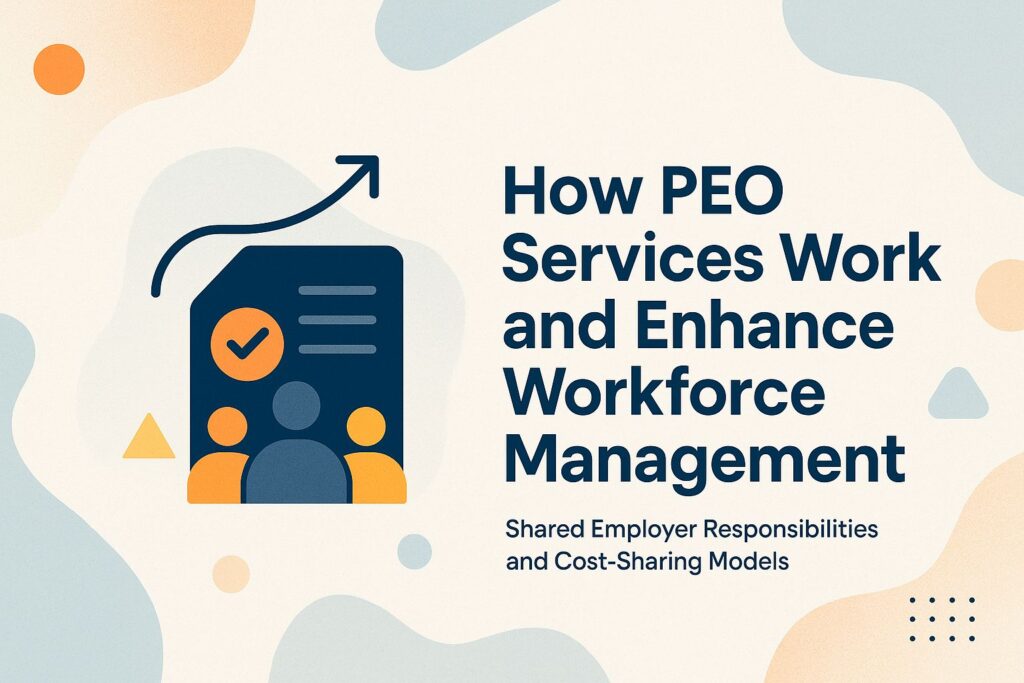
Overview of the PEO Model and Strategic Planning
The PEO model operates on a co-employment basis, allowing businesses to share employee-related responsibilities, which can lead to cost savings and efficiency gains.
This setup allows companies to delegate important HR tasks, like handling payroll, managing benefits, and following labor laws, all while enhancing operational efficiency.
For example, by working with a PEO, a small business can use the PEO’s established HR systems to get group health insurance plans that might have better rates than buying individual plans.
PEOs often handle regulatory compliance, reducing the risk of costly penalties for non-compliance and ensuring ERISA compliance. This focus lets business owners pay attention to their main activities, encouraging growth and reducing paperwork.
Shared Employer Responsibilities and Cost-Sharing Models
PEOs allow businesses to share employer responsibilities such as payroll processing, compliance with labor laws, and administering employee benefits.
By working with a Professional Employer Organization (PEO), businesses can simplify tasks such as payroll management, benefit costs management, bringing new employees on board, and handling benefits.
For example, PEOs handle payroll to make sure it is done on time and follows tax laws, lowering the risk of problems for the business. They help with employee benefits by providing packages that small businesses may find hard to handle on their own.
Working together reduces administrative tasks, allowing businesses to concentrate on growth and keeping employees motivated, which leads to a more productive workplace.
Benefits of Using PEO Services and Insurance Brokers
Using PEO services offers many advantages, such as access to improved health insurance plans, help with compliance, and increased employee satisfaction (learn more about how PEOs assist with workers’ compensation and compliance).
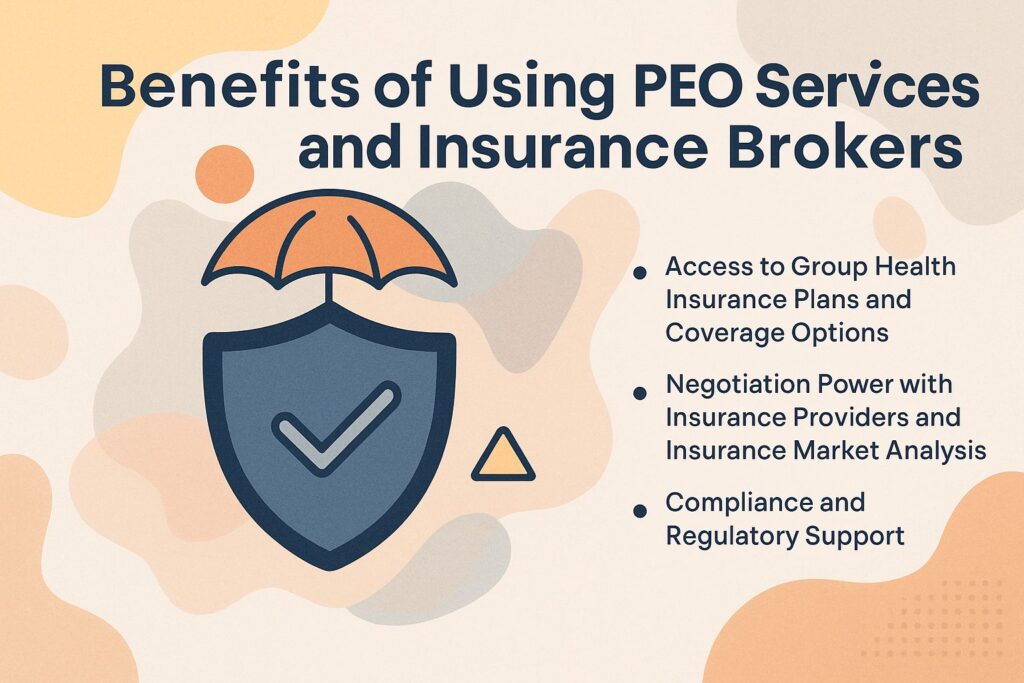
Access to Group Health Insurance Plans and Coverage Options
PEOs offer access to group health insurance plans that typically come with lower premiums and better coverage options than individual plans.
By bringing together many small businesses, PEOs use their combined strength to negotiate better prices. For instance, a construction firm that partnered with a PEO could save up to 20% on health insurance premiums compared to sourcing plans independently.
Many PEOs offer full benefits packages that include health insurance, dental and vision coverage, and retirement plans, improving overall employee satisfaction and benefit trends.As a result, businesses often see improved retention rates, translating to long-term financial savings.
Negotiation Power with Insurance Providers and Insurance Market Analysis
PEOs have strong bargaining power with insurance companies, allowing them to get better rates, insurance coverage, and terms for their client companies through effective negotiation.
For example, a PEO working with small businesses might negotiate lower workers’ compensation insurance rates by using combined employee data, achieving discounts of up to 20%.
By pooling clients, they can also achieve favorable terms like no-cost coverage for workplace safety training, enhancing overall employee safety and reducing claims.
PEOs often offer different insurance choices, like self-insured programs, which can lower expenses and increase coverage limits. This makes them a great partner for businesses wanting to improve their insurance plans.
Compliance and Regulatory Support
PEOs provide essential help with legal requirements and guidelines, helping businesses manage complex labor laws and rules to lower risk.
They address key challenges such as wage and hour laws, employee classifications, and workplace safety regulations.
For example, a PEO can help check if workers are labeled correctly as employees or independent contractors, which is important to avoid fines.
They help in following OSHA rules, cutting down the chance of accidents at work and ensuring workplace wellness.By hiring external help for compliance tasks, businesses feel secure because they are reducing their chances of facing legal issues and money problems due to not following rules.
Cost-Saving Strategies Offered by PEOs and Strategic Cost Analysis
PEOs use different ways to save money, like grouping employees to get cheaper insurance rates and setting up health programs that cut down total medical expenses. If you’re curious about the costs involved, you can explore how much PEO services cost in 2025 to see how savings are balanced with expenses.
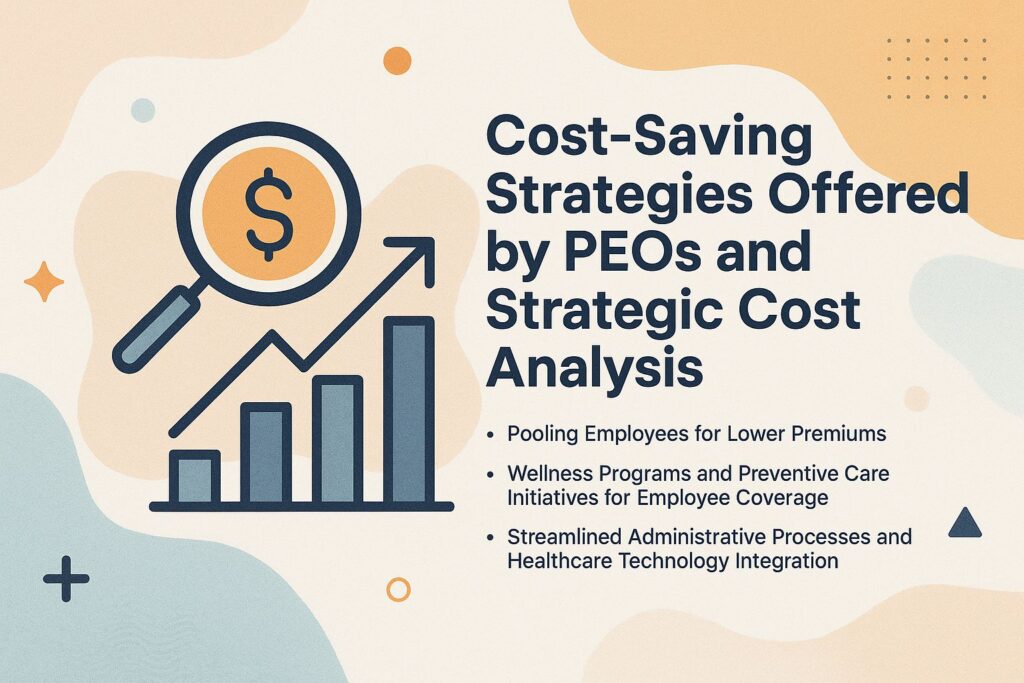
Pooling Employees for Lower Premiums
By pooling employees, PEOs can negotiate lower premiums, resulting in significant savings for small to medium-sized businesses.
For instance, a company with 25 employees typically pays about $1,200 per employee in health insurance due to lack of group purchasing power.By joining a PEO that pools employees from multiple businesses, that cost might drop to $900 per employee.
Over a year, this translates into savings of $7,500 for that company. PEOs can provide access to better benefits, such as retirement plans or HR support, which improves employee satisfaction and retention.
This method helps companies cut costs and get more advantages when hiring qualified employees.
Wellness Programs and Preventive Care Initiatives for Employee Coverage
Wellness programs and preventive care services from PEOs support employee health and help reduce insurance claims and expenses.
For example, a manufacturing company partnered with a PEO to implement an employee wellness program that included health screenings, fitness classes, and smoking cessation support, improving remote workforce health.
Over the course of a year, they reported a 25% decrease in healthcare costs and improved employee productivity metrics. Similarly, a tech firm saw a 40% drop in sick days after introducing mental health support services through their PEO.
These efforts improve employee health and give clear financial benefits, showing how well wellness programs work.
Simplified Administrative Tasks and Combining Healthcare with Technology
PEOs manage payroll and follow legal requirements, helping businesses save money and operate more smoothly.
For example, by outsourcing payroll to a PEO, businesses can save up to 40 hours per month on payroll processing alone, reducing administrative costs significantly. This allows more free time and decreases mistakes, since PEOs usually have a 99% accuracy rate in managing payroll and claims processing.
Businesses that use PEO services save about 30% on costs related to following regulations because they have fewer fines and simpler paperwork, ensuring ERISA compliance. By working with a PEO, companies can redirect the time and money they save into projects that help them grow, enhancing their competitive advantage against competitors.
Case Studies and Examples
Looking at real-life examples shows the clear advantages of PEOs, like substantial cost reductions, improved employee retention, and better employee happiness through employee support services.
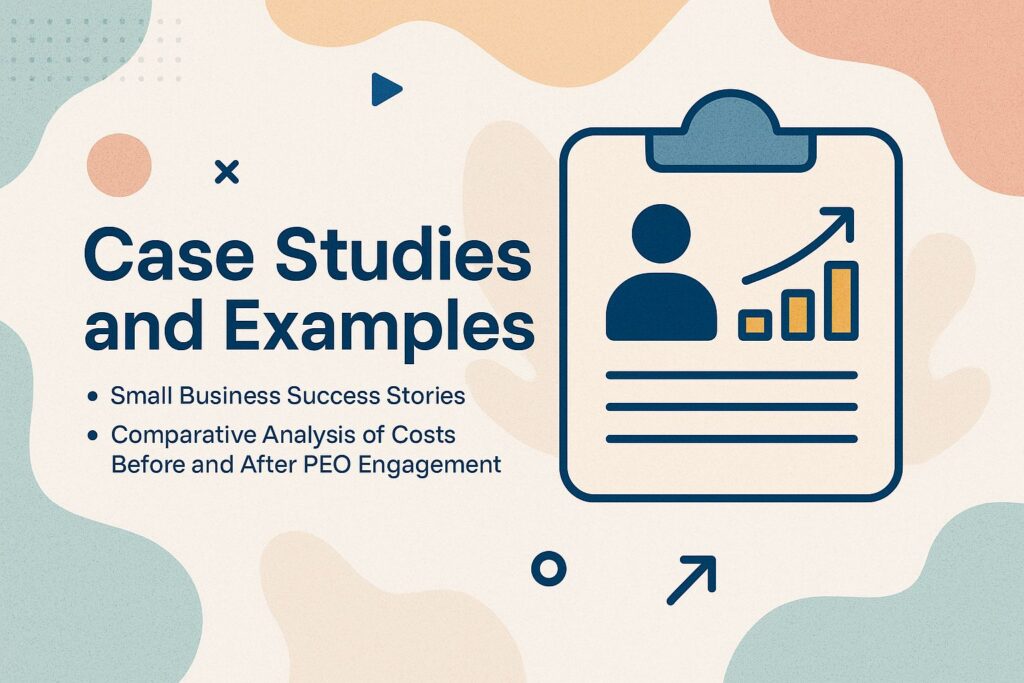
Small Business Success Stories
Small businesses using PEO services have found they can lower health insurance expenses through group insurance and keep employees happy and staying longer.
For instance, a small tech startup in Austin partnered with a PEO, reducing their health insurance costs by 25% in the first year. This savings allowed them to invest in employee development programs, which led to a 15% increase in employee satisfaction scores.
Similarly, a marketing agency in Chicago experienced a 30% reduction in HR administrative tasks and healthcare analytics after outsourcing these functions to a PEO, allowing them to focus on core business strategies and business growth.
These examples demonstrate the clear benefits of partnering with a PEO for small businesses looking to make their operations better and achieve healthcare integration.
Comparative Analysis of Costs Before and After PEO Engagement
A comparative analysis showcases how businesses experience lower health insurance costs, access to services, and improved benefits after partnering with a PEO.
For instance, companies often report a reduction in per-employee health insurance costs by up to 30% upon entering a PEO arrangement. This is largely due to the PEO’s ability to negotiate better rates through pooled risk and access to larger insurance plans.
Also, businesses often receive extra advantages, like wellness programs, telehealth services, and telemedicine options, which can increase employee satisfaction and healthcare accessibility.
Companies can simplify HR tasks by using tools like Gusto or Justworks. These tools help manage vendors, process benefits, and fulfill compliance requirements more easily.
Choosing the Right PEO
Choosing the right PEO is important for improving HR tasks, enhancing employee benefits strategy, and providing the best compliance help.
Evaluating PEO Services and Offerings
Evaluating PEO services involves knowing what they offer, such as health insurance plans, medical plans, help with compliance, and payroll management.
- Start by identifying your business’s specific needs. If employee benefits are important, look at the health insurance options, including healthcare reform and health plans, each PEO offers.
- Compare their compliance support by reviewing how they handle labor laws in your state and their risk assessment capabilities.
- Consider how efficient your payroll services are; tools like Gusto or ADP can improve the connection with healthcare networks and simplify your tasks.
A detailed review of these factors, including care coordination and employee choice, will help you pick a PEO that matches your needs and improves how you manage your staff.
Questions to Ask Potential PEO Partners
When looking at a PEO partnership, businesses should ask clear questions about pricing, services provided, and knowledge of compliance, including healthcare providers and service providers.
- Begin by inquiring about the pricing model: Is it a flat fee or based on the number of employees? Knowing this helps assess long-term expenses and employee cost-sharing implications.
- Next, ask about the range of services provided-does the PEO handle payroll, benefits, HR compliance, and health insurance exchanges? Assess their compliance knowledge by asking how they stay updated on employment laws and healthcare analytics.
These questions help clarify costs and confirm that the PEO matches your company’s specific needs for a successful partnership, enhancing scaling businesses potential.
Final Thoughts on Health Insurance Cost Reduction
To lower health insurance costs, businesses should use PEO services that give them better options in discussions, benefit deduction options, and healthcare integration benefits.
By partnering with a Professional Employer Organization (PEO), businesses can access collective bargaining power, leading to better premium rates and healthcare accessibility. For example, many PEOs negotiate rates with major insurers, resulting in up to 30% savings.
PEOs provide various benefits like wellness programs, value-based care, and telemedicine, which can improve employee happiness while keeping expenses reasonable.
Think about PEOs like ADP TotalSource, Insperity, and Justworks. They provide full HMO and PPO plans:
- ADP TotalSource
- Insperity
- Justworks
These make payroll and HR tasks easier, promoting healthcare network efficiencies, allowing you to concentrate on expanding your business while managing costs well.
Written by Carol Sanders
Harvard University graduate with a degree in psychology and human resources.
Owner of a PEO consulting firm in Massachusetts and contributing writer for PEO Costs.
